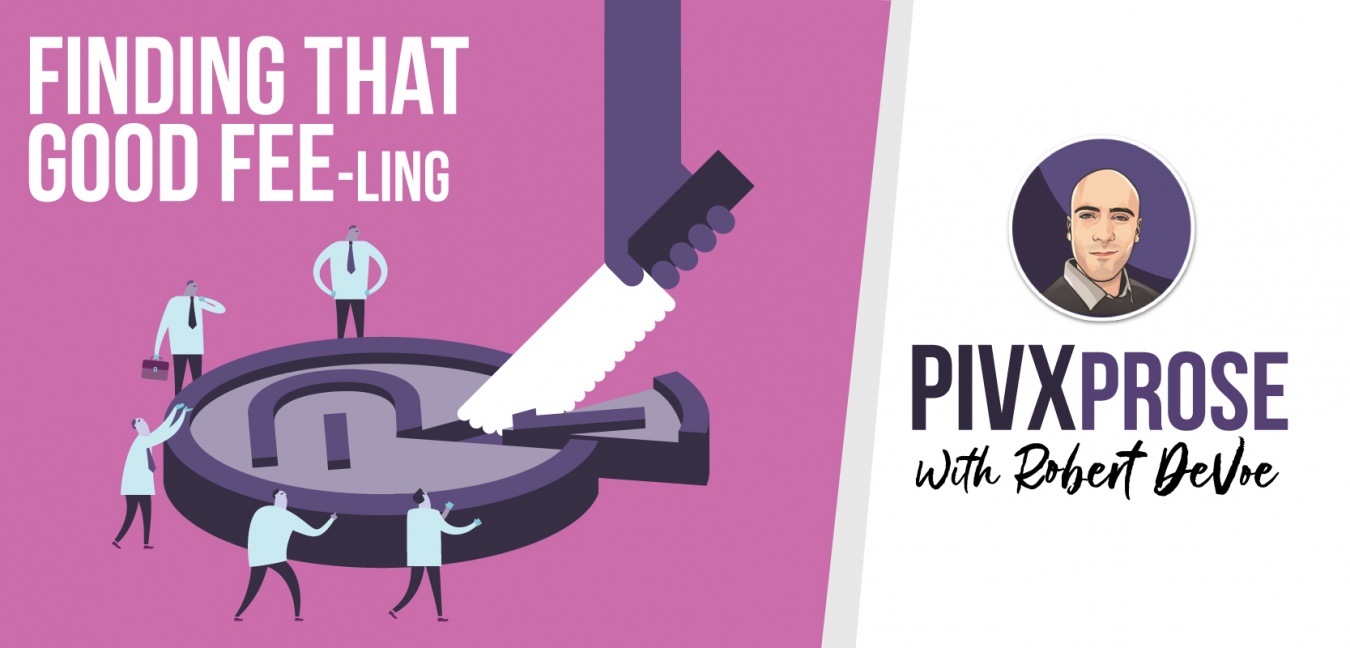
Why transaction fees? The other day I was thinking about what it would take for widespread crypto adoption to occur. One of the hurdles that would need to be jumped is getting people to understand the necessity of transaction fees. To the uninitiated, they could seem like a greedy cash grab from some invisible middleman trying to get a piece of the action. The truth is, transaction fees are a necessary evil. But I think the fee model PIVX uses is as close to the ideal as we’re going to get, barring some kind of incredible technological development that we have yet to discover. So without further ado, let’s dig into transaction fees.
Why do we have transaction fees?
Today, transaction fees exist for one primary reason. They protect a network from potentially dangerous spam attacks that could cripple it completely. Let’s use bitcoin as an example since it uses the traditional transaction fee model for a proof-of-work or cryptocurrency.
If individuals were allowed to send bitcoin without a fee, there would be nothing stopping them from sending thousands or even millions of meaningless transactions back and forth every day. This would quickly bog down the network in needless transactions that serve no purpose and fail to help bitcoin grow as a currency. Instead, it would cause transactions to take hours, days, months, or longer to ever have a hope of going through.
As bitcoin has no central authority from which to decide which transactions are supposedly good or bad, Satoshi Nakamoto created a system wherein each transaction that wants to stand any hope of going through must be accompanied by a variable transaction fee. This fee puts legitimate transactions at the top of the queue.
While it is still entirely possible to submit a bitcoin transaction with no transaction fee attached, its chances of being processed are effectively zero. In some proof-of-work projects such as Vertcoin, no-fee transactions can go through if there is empty space in an upcoming block. But for a busy network like bitcoin, this is virtually unheard-of.
The problem with bidding war-style transaction fees
A problem quickly arises, however, when transaction fees are based on the highest bidder first model. Specifically, during periods of high demand, fees can quickly spiral out of control and essentially make the network useless. This was seen during the bull run of 2017 where bitcoin transaction fees spiked parabolically and made the network effectively useless for small but legitimate transactions.
A similar situation was seen on the Ethereum network when the popular blockchain based Ethereum kitties app dominated and caused transaction fees to explode upwards.
Now let’s take a look at the PIVX model and see how our project decided to tackle this problem. We knew that we would be unable to offer completely free transactions as this would leave the network vulnerable to the previously mentioned spam attack. However, we also wanted transactions to be as low-cost as possible while still keeping the system protected. Finally, we didn’t want to find ourselves in a situation where transaction fees can become too expensive. This type of transaction fee spike can cause quite a bit of damage to a brand as it makes it appear as though fees are too high, cumbersome and unwieldy to be useful.
Instead of going for the top bidder model, the PIVX development team decided to implement a flat-fee model where all transactions cost precisely the same amount, namely 0.01 PIV (or less than one cent USD). With a flat model, the network is protected from spam attacks, but micro-transactions are still entirely feasible.
Who gets the fee?
Another important consideration when discussing transaction fees is who exactly benefits from them, or receives them.
In the bitcoin network, transaction fees go directly to miners. This is not merely to be an incentive for miners to mine in addition to receiving a block reward. These transaction fees will also most likely be the only thing that keeps the network functional once the last bitcoin block has been mined that contains a block reward. In the original bitcoin white paper, Satoshi Nakamoto predicted that by the time the final block reward has been mined, the value of each individual bitcoin could be high enough that miners could be incentivized to continue mining even if their only source of income is transaction fees.
Nakamoto described this, writing: “Once a predetermined number of coins have entered circulation, the incentive can transition entirely to transaction fees and be completely inflation free.”
The same system applies to Ethereum, where transaction fees are paid to miners. While it’s entirely understandable that miners should be incentivized for their contributions to the network, as I discussed in my last article, fairness needs to be an issue to be considered as well.
As PIVX is a proof-of-stake currency and doesn’t have miners, the development team created an entirely different economic model than that of bitcoin or Ethereum.
Namely, bitcoin boasts a strictly limited supply of coins that will ever exist. If an amount of bitcoin is lost, then the total supply of bitcoin is permanently reduced. PIVX, on the other hand, uses a constant emission model in which there is no limit to the number of PIV that could ever exist. This type of emission model comes with an obvious problem. If the number of PIV that can ever exist is unlimited, then how can it ever be a store of value? To understand this concept better, imagine what would happen if every year an extra 10 million tons of gold were somehow manufactured and put on the market. This would make gold an unlimited resource; therefore it would lose its value due to the loss of scarcity. Cryptocurrencies work the same way.
PIVX has an attractive solution to this puzzle, and it comes in the form of how transaction fees are handled. Instead of giving transaction fees to miners, or in our case – stakers, all transaction fees are burned. “Burned” means that the transaction fee is permanently destroyed and thus the supply of PIV on the market is reduced.
The idea is that as demand for the network increases, the amount of PIV that is destroyed through transaction fees will increase. This will initially serve to slow the expansion of the supply of PIV on the market. Eventually, it will act as a stabilizing, and finally a deflationary (or supply reducing) function. It is even conceivable that if in the future the demand for PIVX transactions is similar to that of bitcoin today, the supply of PIV in the future could be much lower than it is today.
Handling the big time
On the bitcoin network, transaction fees go up substantially in periods of high demand. This is done so that fewer transactions will occur and the network won’t be bogged down. But as I mentioned before, this causes an obvious problem – in periods of high demand, the bitcoin network can become too expensive for many small transactions. There are solutions to this in play today that rely on what are known as second layer technologies. The most popular of which is known as Lightning Network.
The goal of PIVX, however, is to be able to support a reasonably high amount of transactions without needing to rely on outside technologies. As the network stands today, could PIVX support as many transactions as bitcoin does without relying on second layer solutions?
Currently, PIVX supports a maximum transactions per second, or TPS, of 173. That’s based on a 2MB block every sixty seconds. With a TPS of 173, that means PIVX could support up to 10,380 transactions per minute, or 622,800 transactions per hour. As PIVX is a project that boasts an active development team, the project can grow as our needs change.
Final thoughts
Going back to my introductory statement on helping those new to cryptocurrency understand transaction fees, I think simply through the fact that the PIVX has a low, flat fee that is always predictable can make all the difference.
Instead of needing to explain to a new user that their transaction could cost anywhere from less than one cent to over a dollar or more based on something that may not be obvious, a new user to PIVX only need to know that each transaction costs 0.01 PIV no matter what’s going on in the network. Not just that, but those transaction fees actually help increase the value of every PIV on the network since fees are burned, not passed off to an industrial mining company running thousands of ASIC machines on the other side of the world.
And not only are PIVX transaction fees affordable and predictable, but they make each PIV you own more valuable over time.






